If you dream of owning a horse, there’s lots to think about. And knowing how to feed them a healthy diet is top of the list!
So what do horses eat? Can you just let them graze in a field? Or is it more complicated than that? And how much food do they actually need?
We’re going to answer all these questions and more! So read on to find out everything you need to know about healthy eating for horses.
The equine digestive system
Just as with humans, a balanced diet is very important to a horse’s health. But the kinds of food they eat are quite different to our own.
Horses are herbivores, so the vast majority of their diet comes from plant sources. Their whole digestive system is designed to break down plant material into the nutrients they need to thrive.
Although horses are large animals, their stomachs are relatively small. Depending on the size of the horse, the stomach can have a capacity of between 2 and 4 gallons. That’s just 10 percent of the volume of the whole digestive tract. Relative to its size, it’s the smallest stomach of any domestic animal.
That means that it’s best for horses to eat little and often.
But how much should they be eating?
How much do horses eat?
The exact amount required for a healthy diet depends on the size, breed and activity levels of the horse. As a general rule of thumb, a horse should eat around 2 percent of its body weight each day.
For very overweight horses, that amount will be much lower. A horse that urgently needs to lose weight should be eating more like 1.5 percent of its body weight daily.
Conversely, a large horse # doing heavy draft work may need up to 3 percent of its body weight daily.
It’s important to monitor your horse’s weight and body fat levels to ensure they’re eating the right amounts. The animal welfare charity Blue Cross provides a helpful guide to doing this in its booklet Fat Horse Slim.
So we know horses should eat little and often. And we’ve got a better idea of how much they should be eating. But what foods should be included in their diets?
The range of foods in a horse’s diet
Horses can eat a range of plant-based foods. The best known is grass, and you’ll often see a horse munching away in a field or paddock. Other foods include hay, fruit and vegetables.
There are also food supplements known as “concentrates”. Some horses may need these to get extra nutrients. And salt is important too.
Let’s take a look at each of these in turn.
1. Grass
Most people know that horses eat grass. But it might surprise you to know that all grass is not the same.
Grass, like all plants, makes its own energy from a process called photosynthesis. This uses energy from the sun together with water and a substance called chlorophyll to make sugars. These sugars are often referred to as “water soluble carbohydrates” or WSC.
There are two types of sugars in grass – “simple” sugars and storage sugars, known as fructan. It’s these that keep the grass alive and growing. And they’re also what make it a good source of nutrition for horses.
But just as with humans, too much sugar is a bad thing! So allowing horses unrestricted grazing throughout the year can lead to them putting on weight. And that in turn can lead to serious health problems. Too much grass can also lead to a debilitating condition called laminitis.
Grass is higher in sugars at different times of the year, and even at different times of the day and night.
When it’s dark, the grass can’t photosynthesize. That means it will contain lower levels of simple sugars, so it will be less fattening. It will still contain fructan, however. So eating too much can still cause problems for your horse.
In temperate climates, spring grass is particularly high in WSC. But autumn grass can be very calorific too.
Ponies left to graze unchecked can eat as much as 5 percent of their body weight in grass each day. With typical spring grass, they could be eating three times as many calories as they need.
So while grass can be an important of a horse’s diet, it may need to be restricted from time to time. And if a horse needs to lose a lot of weight, it might need to be eliminated altogether.
2. Hay or haylage
Another good source of nutrition for horses is hay or haylage. This is grass that is cut and left to dry.
In the case of hay, it’s cut when the grass is mature. It’s then left to dry on the fields before being baled. With haylage, the grass tends to be cut earlier in the season. And it’s left for a shorter period of time before being baled and then wrapped in plastic.
As a result, hay has a lower moisture content than haylage. It comprises around 85 percent dry matter, compared to between 50 and 70 percent for haylage. As a result, a horse will need more haylage than hay to get the same amount of nutrition.
The nutritional value of both hay and haylage will decline the longer it’s stored after harvesting. and some nutrients, like vitamin E, are lost relatively quickly.
So while hay and haylage can provide all the calories your horse needs, it shouldn’t be their only source of nutrition. A feed supplement will ensure they also get all the vitamins and minerals they need.
Remember too that the calorie content of both hay and haylage will depend on the grass it’s made from. The only way to tell for sure how much WSC it contains is to get it professionally analyzed.
3. Fruit and vegetables
Horses love both fruit and vegetables, so it’s a great way of giving them a tasty treat. Hiding some fruit and veg in your horse’s straw can also increase foraging time and tackle boredom.
But it’s important to know that not every type of fruit or vegetable is good for horses. So what can they eat, and what should be avoided?
The traditional favorites are carrots and apples, and they’ll go down a treat. Just remember to feed them in moderation – one or two are more than enough.
Other good vegetable options include parsnips, turnips, squashes, beets, pumpkin, lettuce, celery and snow peas. And for fruits, try oranges, bananas, pears or melons.
Steer clear, however, of any vegetables from the nightshade family. These include tomatoes, eggplant, potatoes and peppers. They include substances that can interfere with your horse’s gut, causing problems including constipation and colic.
Also to be avoided are onions and garlic. These contain a chemical called propyl disulfide, which can damage horses’ red blood cells.
Cruciferous vegetables – cauliflower, broccoli, cabbage and brussels sprouts – can cause excess gas and colic. And avocadoes, persimmons and rhubarb are toxic to horses too.
So when it comes to fruit and veg, stick to the old favorites. Don’t overdo it. Make sure it’s clean before you feed it to your horse. And prepare it so that it’s in manageable-sized pieces, to avoid any risk of choking.
4. Concentrates
Concentrates are mixtures of grain, bran, vitamins and minerals. They may also contain other ingredients, like molasses, to make them more palatable.
They’re designed to give a boost to horses who need extra nutrients. They’re often used for mares in foal or working horses, for example.
But they can be high in calories, especially if they include molasses. So if you’re considering adding concentrates into your horse’s diet, make sure you know exactly what they contain.
5. Salt
Salt is another ingredient that’s sometimes added to the diets of horses. It’s designed to redress the sodium lost through sweat as the animal is working. For the same reason, some horses will crave salt during the summer months.
The amount of salt that’s appropriate will vary according to the size of the horse.
Large horses – those weighing between about 1,100 and 1,500 pounds – should have up to 30 grams of salt a day. That’s a tablespoon full.
For medium sized horses between about 650 and 1,100 pounds, the amount should be 20 grams, a dessert spoon full. And for ponies up to 650 pounds, the amount should be up to 10 grams, or a teaspoon full.
Salt can be added to feeds, or left for the horse to take on demand as a salt lick. If adding to feed, it’s often mixed with water to prevent it falling to the bottom and being left untouched.
A good diet is key to a healthy horse
As with all living creatures, horses need a balanced diet to stay fit and healthy. We hope our answer to the question of “what do horses eat?” has helped explain how to achieve that.
Just remember that grass, whilst a great source of nutrition, can lead to weight gain. Hay or haylage can be a good alternative. But if it’s the main source of food, consider adding concentrates for vitamins and minerals. And the occasional piece of fruit or veg will make a delicious treat.
Feed him well, and you’ll be giving your horse the best chance of a long and happy life.
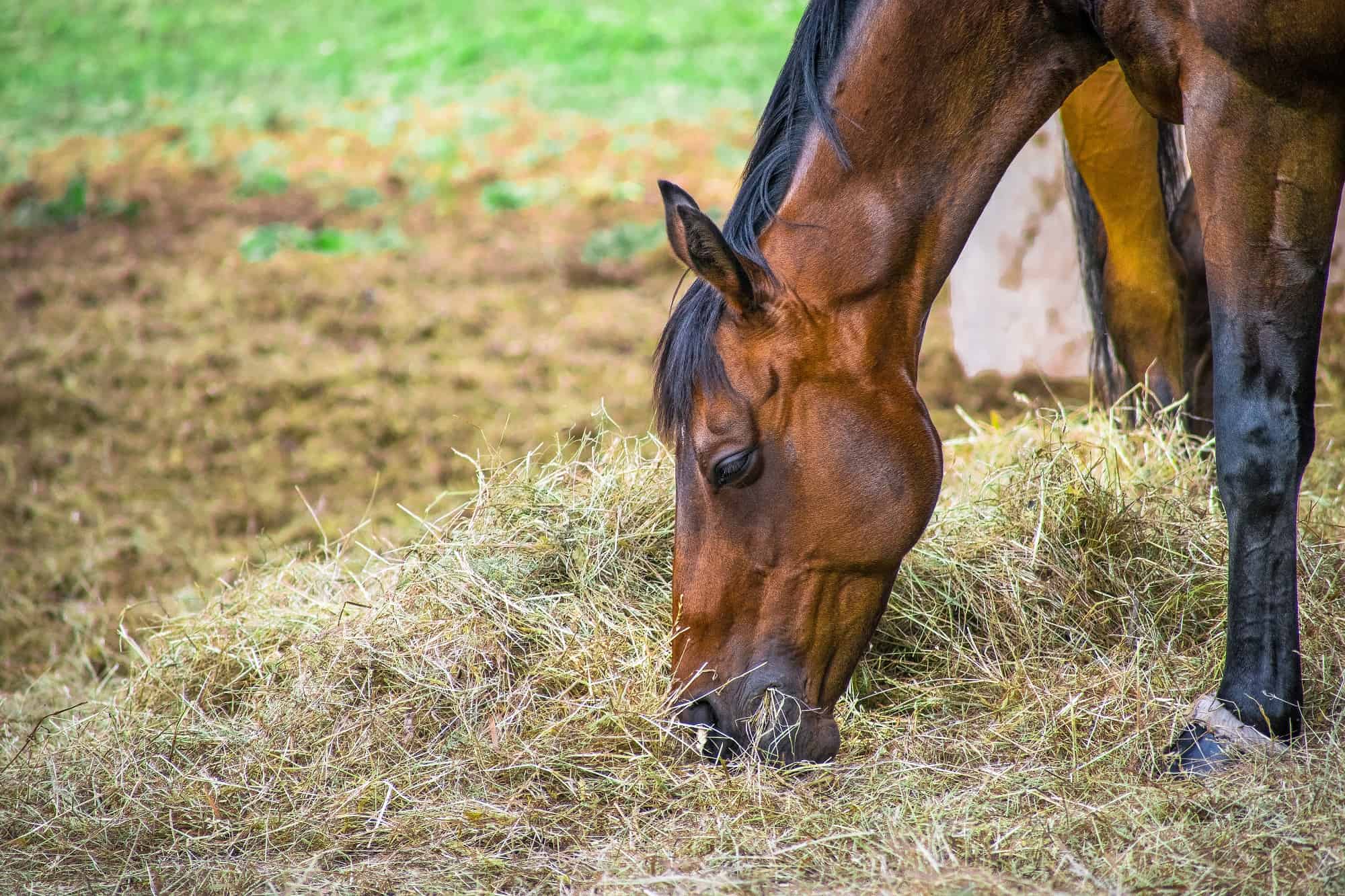
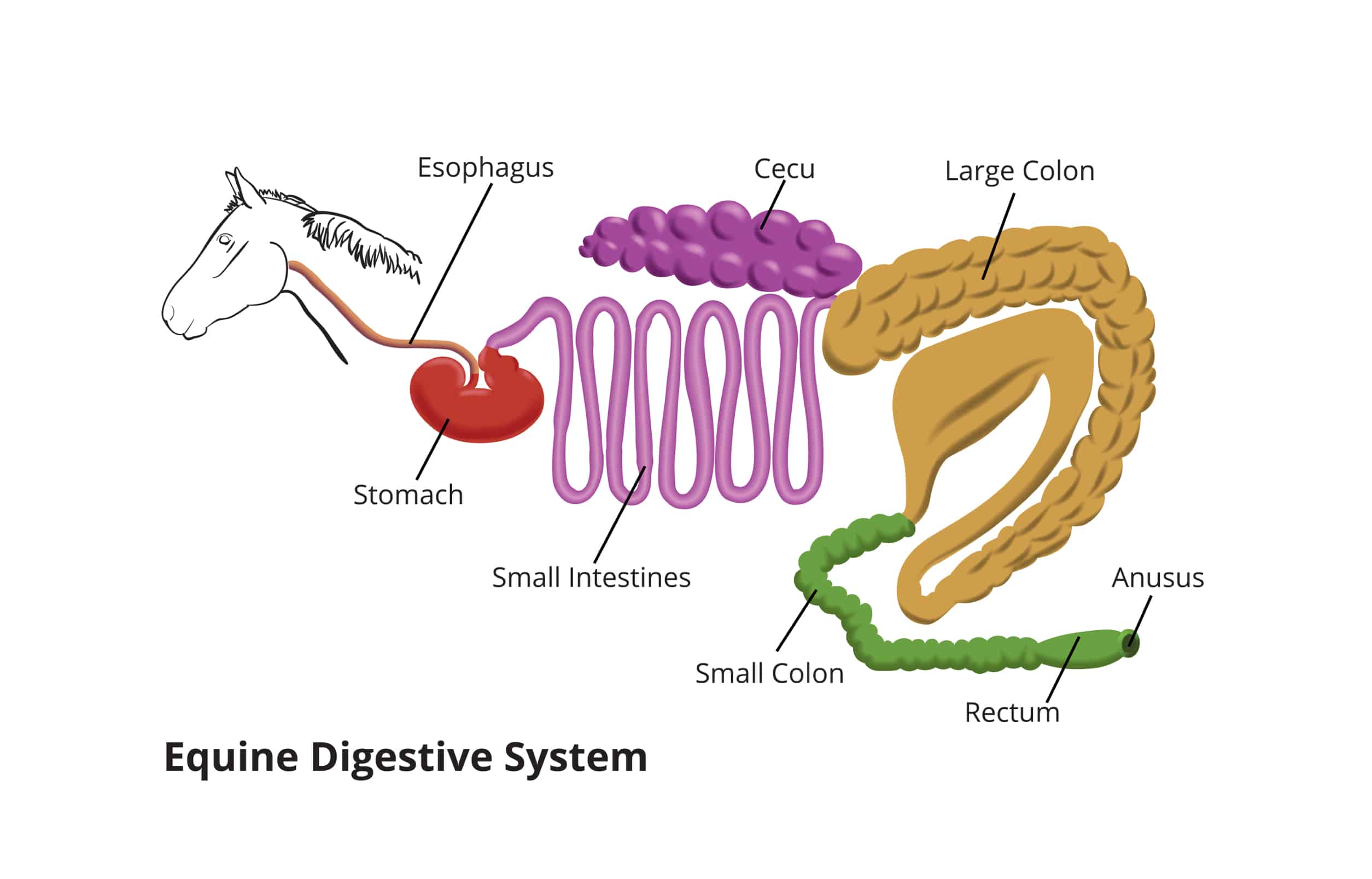
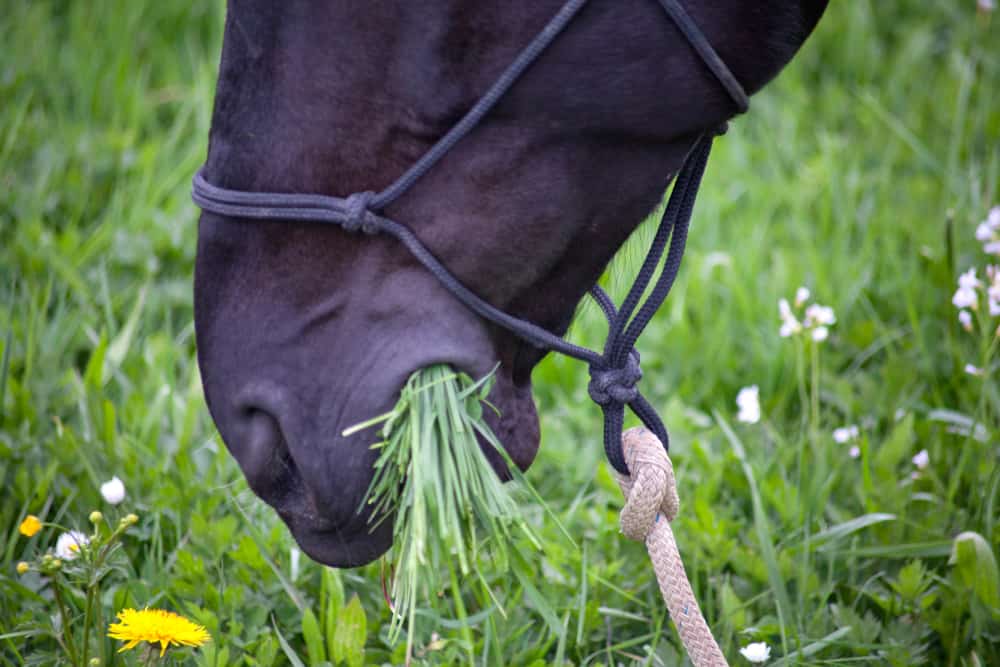
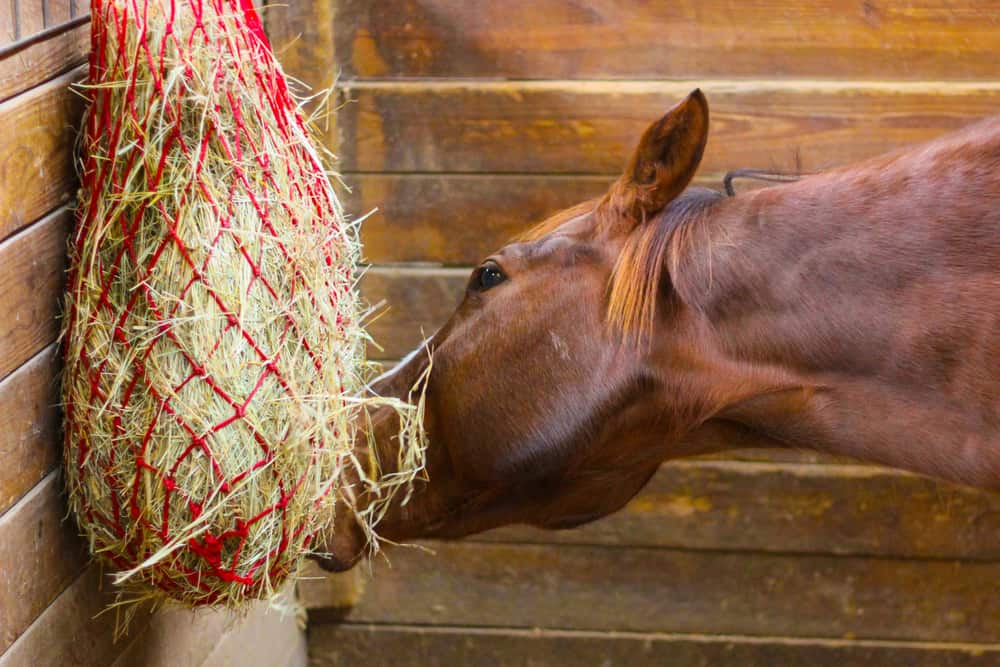
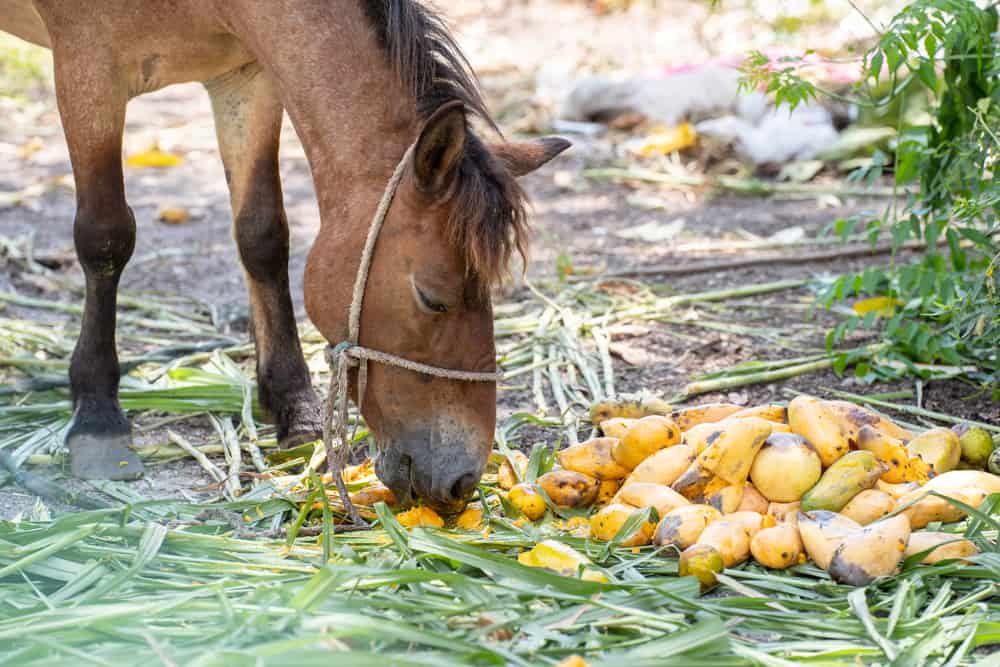
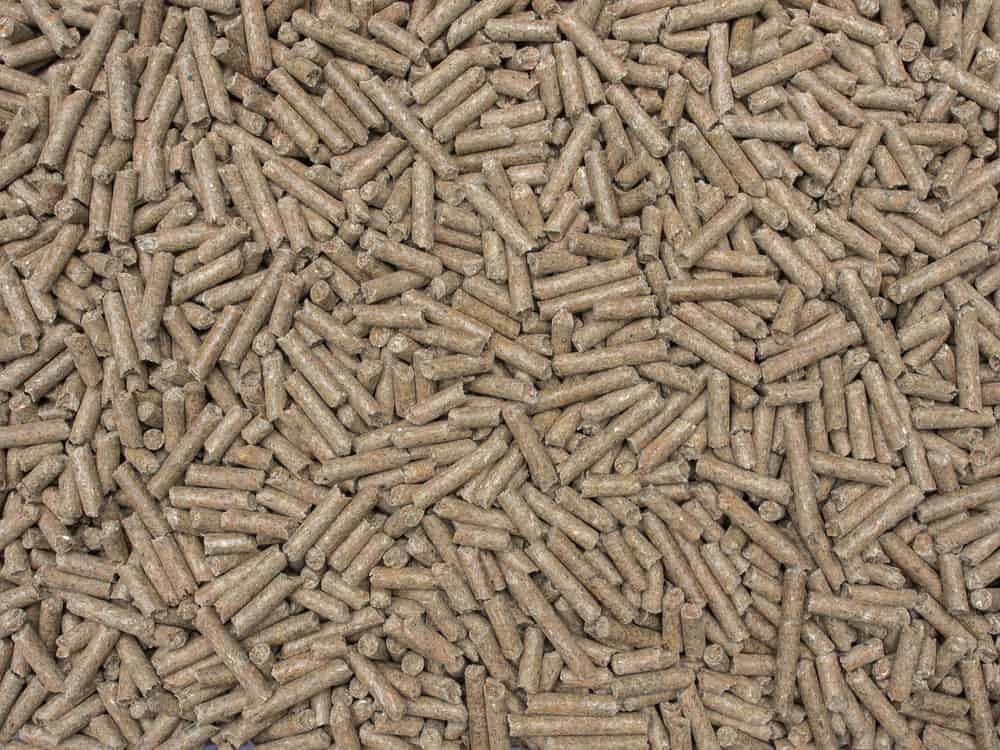
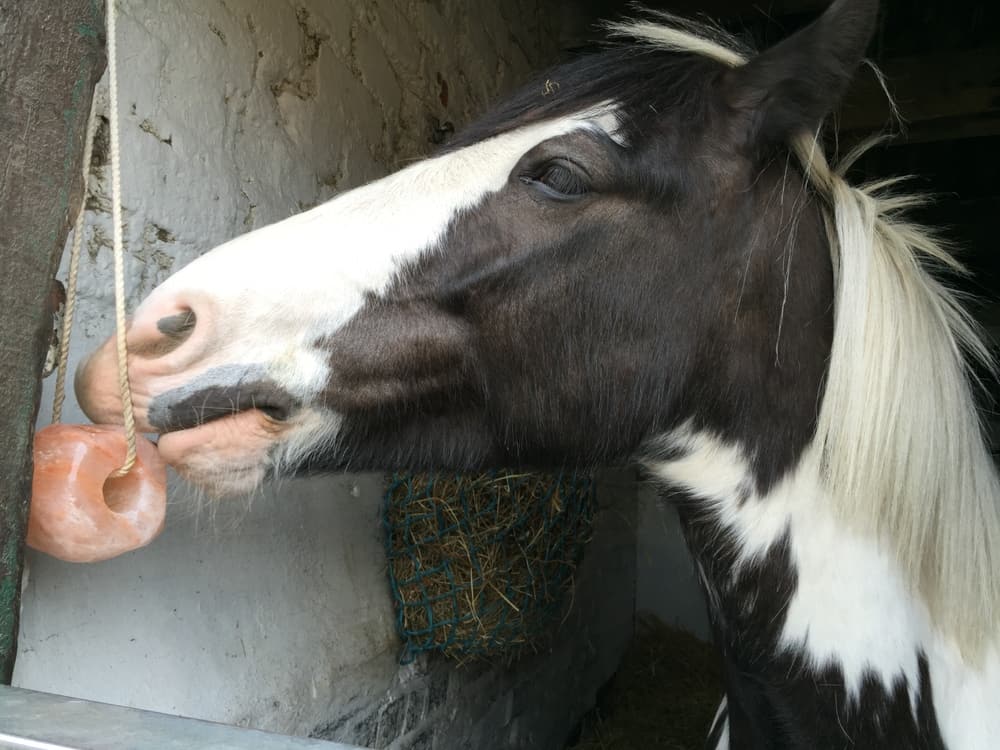








I love horses they are my favorite animals.